16 November 2024
![]() 4 mins Read
4 mins Read
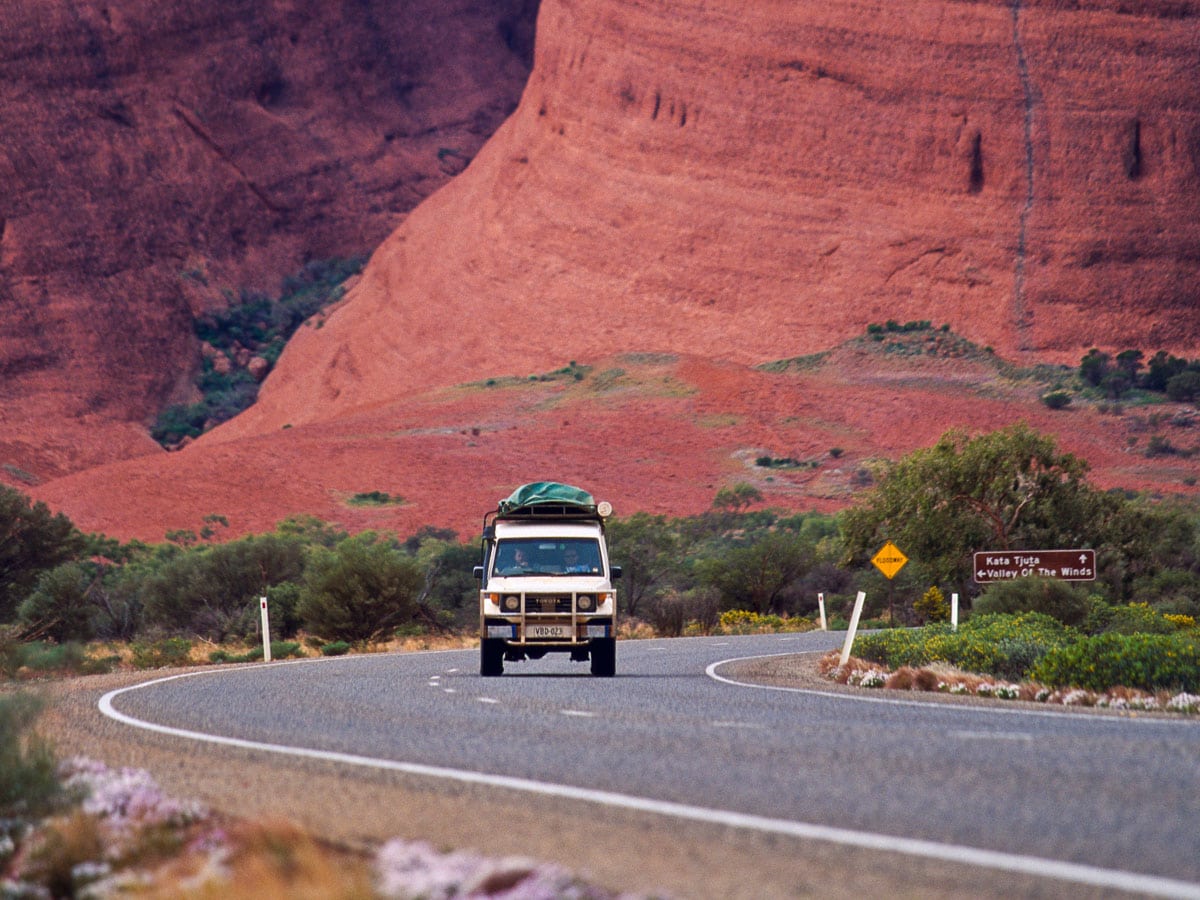
When planning a trip out to Uluru, it won’t take long for the costs to add up. So why not try and save some money, and get in some quality Mother Nature time, with a camping trip out in the outback?
If camping isn’t quite your thing, we’ve rounded up the best accommodation options in Uluru. But if you don’t mind a stay without the bells and whistles, read on.
This is the closest campground to the Uluṟu-Kata Tjuṯa National Park where you can set up your tent or caravan at its powered and unpowered sites. While prices for this might seem more than your average campsite for the level of facilities (from around $40 for an unpowered site), it is a pretty good deal when you consider the other options nearby.
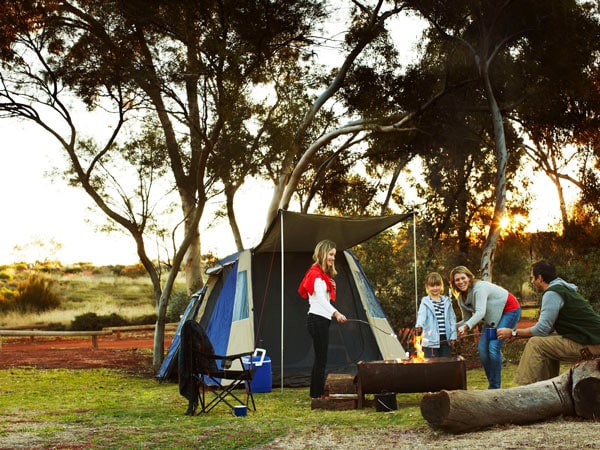
Ayers Rock Campground is the closest to Uluṟu-Kata Tjuṯa National Park. (Image: Voyages Indigenous Tourism Australia)
Facilities include a swimming pool, communal barbecue facilities for a morning fry-up, a self-service laundry and an outdoor kitchen. Are fears of wildlife driving you from packing a tent? Book a berth in one of their mixed four-bed dormitories, or level up with one of the family cabins. This may also be a good option when camping in winter, where temperatures can drop below zero degrees celsius at night, or in summer when they rise significantly. Dogs are welcome at the campsite.
The closest thing to free camping can be found around 100 kilometres away from the monolith, at the Curtin Springs Wayside Inn. This roadside inn-meets-working cattle farm-meets-paper mill-meets-campsite is an experience in local outback hospitality. It has facilities such as its homestyle restaurant, coin laundry, walking tours across the nearby salt lake, and tours of the local paper mill, Curtin Springs Paper.
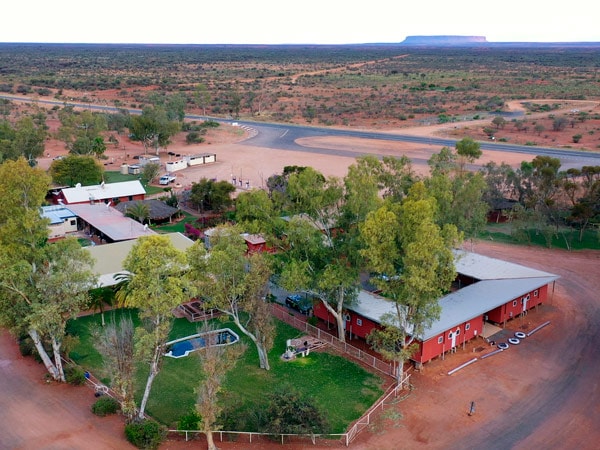
Curtin Springs Wayside Inn offers free unpowered sites, but you’ll be a fair distance from Uluṟu.(Image: Tourism Australia/Global Headquarters)
But the real highlight for budget-weary travellers is that it offers free unpowered campsites and relatively cheap powered sites. Powered sites can — and should — be booked in advance as they are swiped up quickly, but booking in advance for unpowered sites is not available. Barbecues are available. And the water situation? A $4 per person per shower charge applies and it costs $10 to fill up your tank. Black water cannot be dumped, and an onsite store sells petrol and food.
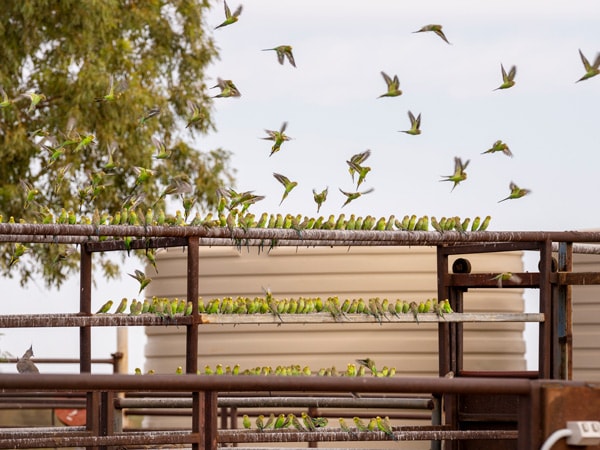
The serenity is momentarily interrupted by the birdlife. (Image: Tourism Australia/Global Headquarters)
It is illegal to camp on the side of highways on your way to or out of Uluṟu. You can only camp in structured, specially set up campsites.
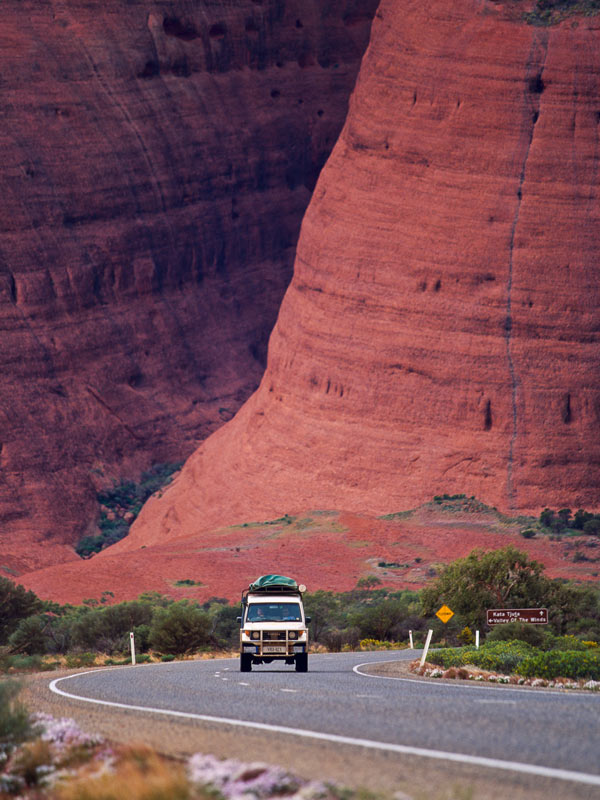
It may be tempting to camp on the roadside, but it is actually illegal to do so.
If you are taking the DIY route, and aren’t glamping, autumn and spring are generally considered the better times to camp in the Uluṟu-Kata Tjuṯa National Park. The days don’t reach the scorching highs of the summer — making the tent all that much more bearable — and you won’t have to load up on thermals that you will probably need in winter.
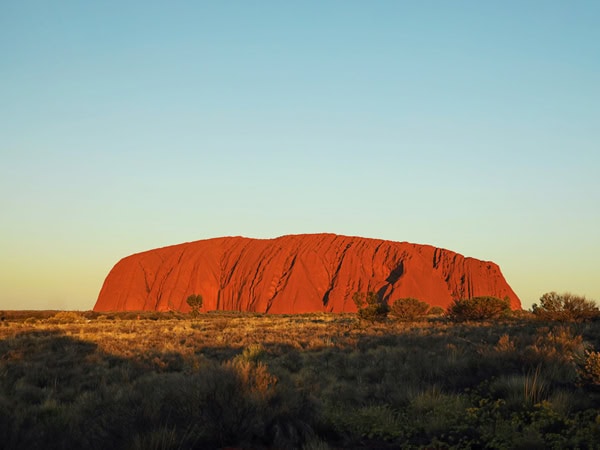
Spring and autumn are generally the best time to visit Uluṟu. (Image: Tourism Australia)
Pets are not allowed in Uluṟu-Kata Tjuta National Park itself. Do not leave the dog on its own when you go out exploring for the day, but ask around to find out what dog-sitting options there are available.
You can only light a fire at the Ayers Rock Resort campground if it is winter and in the absence of a fire ban. Plan ahead and bring firewood (you must not gather wood in the park nearby, or, heaven forbid, chop down trees), and a firepit that raises it off the ground.
Yes, there are snakes in Uluṟu. But don’t panic just yet! While there are 13 species in total, five are either non-venomous or blind. Of the remaining venomous eight, only three are considered dangerous: the Western Brown, the Desert Death Adder and the liru or King Brown or Mulga snake.
While this last one is the most venomous, like with many of Australia’s snakes, it’s all about keeping an eye out and keeping clear if you spot one.
LEAVE YOUR COMMENT